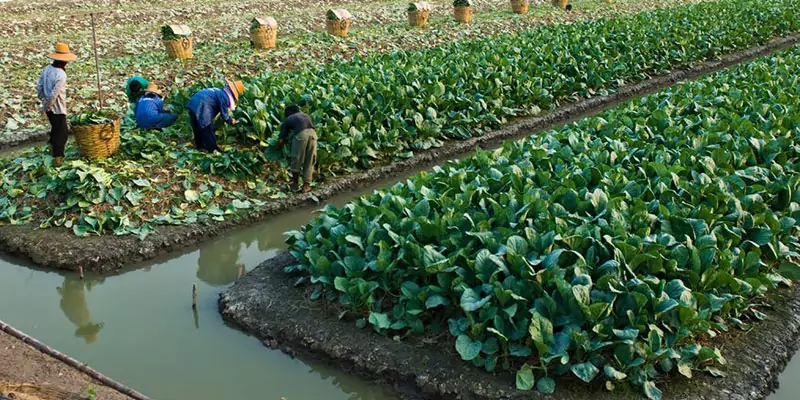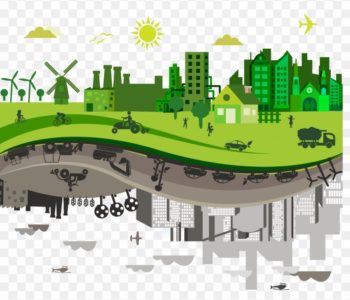
Covid-19: Potential Wastewater Risks
T
he coronavirus disease 2019 (COVID-19), caused by severe acute respiratory syndrome coronavirus 2 (SARS-CoV-2), has spread widely, becoming a global pandemic. COVID-19 symptoms include cough, fever, difficulty breathing, and diarrhoea. Genetic material from SARS-CoV-2 ribonucleic acid (RNA) has been detected in the faeces of both symptomatic and asymptomatic people who have been infected 1.
This pandemic has become one of the most significant international public health challenges of this century; globally, nearly 53 million cases and more than 1.3 million deaths have been counted to date 2. Tools for rapidly identifying, containing, and mitigating the spread of SARS-CoV-2 are crucial for managing community transmission, particularly until a vaccine or effective pharmaceutical intervention is developed and becomes widely available 3.
Considering recent epidemics that have emerged around the world, there has been increasing awareness regarding the risk of exposure to pathogens during wastewater collection and treatment. Emerging pathogens may enter wastewater systems through several pathways, including viral shedding in human waste, animal farming, hospital effluent, or surface water runoff following biological incidents. Sewage and wastewater systems transport water to wastewater treatment plants (WWTPs), and the water is then discharged into the environment. SARS-CoV-2 viral material poses a significant threat to human health, and their transmission in wastewater systems may lead to increased exposure, potentially causing serious health consequences. This virus is primarily transmitted through person-to-person and aerosol/droplet transmission via the respiratory system, with fomite and touch-based contamination comprising a lesser proportion of cases. Potential exposure and transmission through sanitation systems have not been sufficiently studied and require further evaluation 4 5.
Environmental surveillance has commonly been implanted in public health management, and methods such as testing wastewater for evidence of pathogens can indicate the severity and scope of pathogenic spread in communities. In the context of the ongoing COVID-19 pandemic, environmental surveillance methods are being used to evaluate SARS-CoV-2 shed in wastewater via human waste 6. Wastewater monitoring exhibits significant promise as an early detection approach. However, available data indicate that the role of wastewater as a potential source of pathogens and as a risk factor for public health must be further explored 4.
Further, genetic material from SARS-CoV-2 in untreated wastewater and/or sludge has been detected in many regions, such as Milan, Italy; Murcia, Spain; Brisbane, Australia; multiple locations in the Netherlands; New Haven and eastern Massachusetts, United States of America; Paris, France; and existing poliovirus surveillance sites across Pakistan. Researchers in the Netherlands, France, and United States of America have reported a correlation between wastewater SARS-CoV-2 RNA concentrations and COVID-19 clinical case reports; research from the latter two countries further suggests that wastewater virus RNA concentrations can provide a 4- to 7-day advanced indication of incoming COVID-19 confirmed case data 6.
Recently observations of viral material in wastewater have intensified the need for the acquisition of more information on the transmission pathways of SARS-CoV-2 through various environmental exposure pathways, including that of wastewater. Wastewater is known to be a major pathogen transmission pathway, and contaminated water should be treated carefully to reduce the risk of human exposure 7. Moreover, contamination risk is extremely high in densely populated regions with minimally developed sewage and wastewater treatment facilities. This is particularly critical for SARS-CoVs, as they can survive for several days in untreated sewage and longer in colder regions 8.
Conventional sewage treatment methods that include disinfection are expected to effectively eradicate SARS-CoV-2 8. Despite ongoing treatment strategies, recent studies have shown that SARS-CoV-2 RNA has been found in the outlet of WWTPs as well as in water bodies receiving treated wastewater, indicating a serious public health risk via the faecal–oral or faecal–aerosol infection routes 9. Covid-19 transmission through wastewater poses a major concern in areas without adequate sanitation and water treatment facilities, as discharge of wastewater without appropriate treatment would expose the public for infection 7. Globally, approximately 1.8 billion people access faecal-contaminated water sources as drinking water, which significantly increases the risk of COVID-19 transmission by several magnitudes when proper precautions are not taken8. Therefore, the risk of infection through various forms of contact with conventionally treated wastewater cannot be dismissed.

Owing to the lack of clean natural water resources in many countries, treated and untreated wastewater is increasingly used for irrigation. In addition, sludge from treated wastewater has been applied as fertilizer, and it is increasingly used as an agricultural amendment. The viruses contained in this wastewater and sludge are thus deposited on crops and soil where they are likely to survive for a short period. This can facilitate further spread into ground and agricultural water sources, further increasing the risk of exposure. It is therefore important to understand the survivability of and exposure risk to these viruses, specifically on crops and soil. Studies on viral survivability in such conditions can only be conducted with enteric viruses that can multiply in cell cultures. Complex methods are required as the presence of the viral genome alone does not indicate the presence of infectious viral particles 4.

Although the extent of infectivity associated with SARS-CoV-2 RNA in treated wastewater is not yet clear, the potential risk can be minimized by ensuring complete viral RNA removal in wastewater treatment plants 9. It may be beneficial to add an additional disinfection step, or ‘tertiary treatment’, to further reduce the risk posed by viral pathogens. Disinfection methods for wastewater effluents and water include physical and chemical techniques, such as ultraviolet light and heat treatments as well as chlorine and ozone treatments, respectively. Ozonation and UV irradiation are reported to be more effective than chlorine-induced reactive oxygen species formation; however, the latter induces residual disinfection, which ozonation and irradiation cannot facilitate 10. Moreover, chlorine addition to create a residue after ozonation can be performed to produce water free of toxic residues. Despite existing disinfection techniques, further investigation is required to determine dose and contact time for SARS-CoV-2 inactivation 4 8. In addition to conventional treatment methods, household disinfection techniques such as boiling, nanofiltration, UV irradiation, and bleaching powder addition in appropriate doses are also effective and should be evaluated for regions without safe piped water supplies and centralized water treatment facilities.
References
1. Ahmed W, Angel N, Edson J, et al. First confirmed detection of SARS-CoV-2 in untreated wastewater in Australia: A proof of concept for the wastewater surveillance of COVID-19 in the community. Sci Total Environ. 2020. doi:10.1016/j.scitotenv.2020.138764
2. WHO Coronavirus Disease (COVID-19) Dashboard. Covid19.who.int. https://covid19.who.int/. Published 2020. Accessed November 14, 2020.
3. Hassard F, Lundy L, Singer AC, Grimsley J, Cesare M Di. Comment Innovation in wastewater near-source tracking for rapid identification of COVID-19 in schools. The Lancet Microbe. 2020;5247(20):19-20. doi:10.1016/S2666-5247(20)30193-2
4. Lahrich S, Laghrib F, Farahi A, Bakasse M, Saqrane S, El Mhammedi MA. Review on the contamination of wastewater by COVID-19 virus: Impact and treatment. Sci Total Environ. 2021. doi:10.1016/j.scitotenv.2020.142325
5. Mohapatra S, Menon NG, Mohapatra G, et al. The novel SARS-CoV-2 pandemic: Possible environmental transmission, detection, persistence and fate during wastewater and water treatment. Sci Total Environ. 2020. doi:10.1016/j.scitotenv.2020.142746
6. WHO. Status of environmental surveillance for SARS-CoV-2 virus. 2020;(August):1-4.
7. Kataki S, Chatterjee S, Vairale MG, Sharma S, Dwivedi SK. Concerns and strategies for wastewater treatment during COVID-19 pandemic to stop plausible transmission. Resour Conserv Recycl. 2021. doi:10.1016/j.resconrec.2020.105156
8. Bhowmick GD, Dhar D, Nath D, et al. Coronavirus disease 2019 (COVID-19) outbreak: some serious consequences with urban and rural water cycle. npj Clean Water. 2020. doi:10.1038/s41545-020-0079-1
9. Abu Ali H, Yaniv K, Bar-Zeev E, et al. Tracking SARS-CoV-2 RNA through the wastewater treatment process. medRxiv. 2020:2020.10.14.20212837.
10. Zhang CM, Xu LM, Xu PC, Wang XC. Elimination of viruses from domestic wastewater: requirements and technologies. World J Microbiol Biotechnol. 2016. doi:10.1007/s11274-016-2018-3










1 COMMENT
Thanks a lot for the article post. Really looking forward to read more. Cool. Sandy Inger Trembly
Comments are closed.